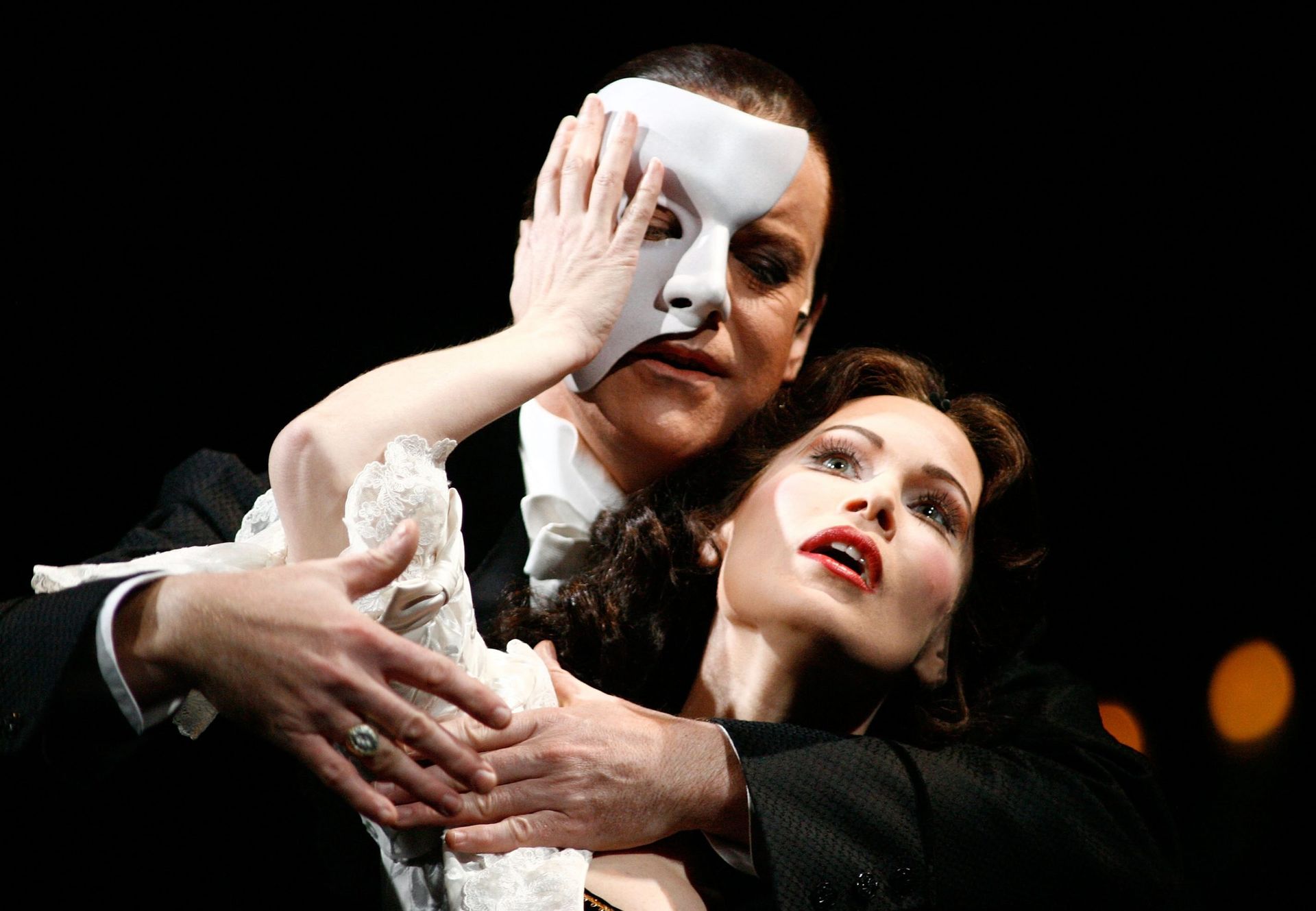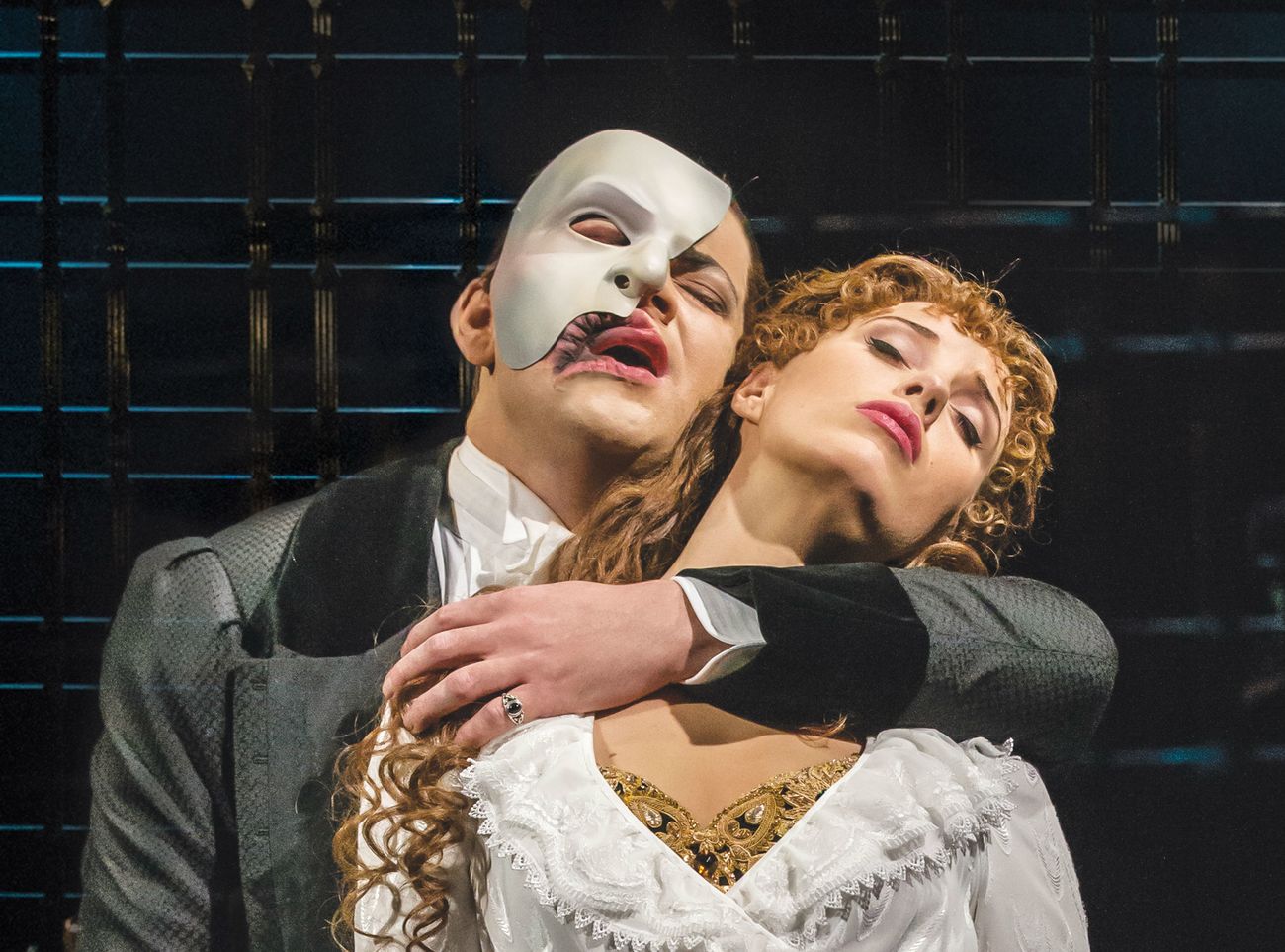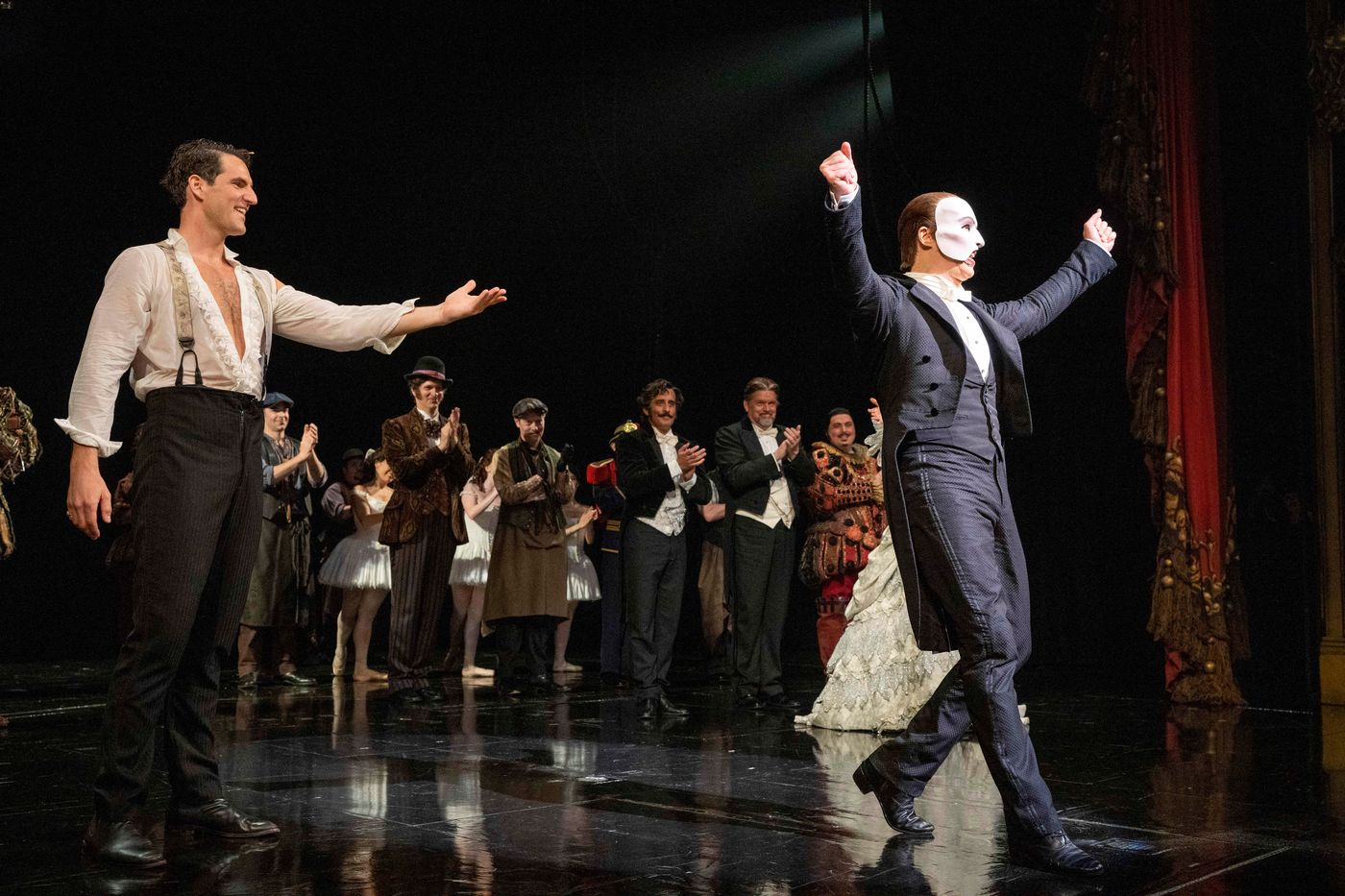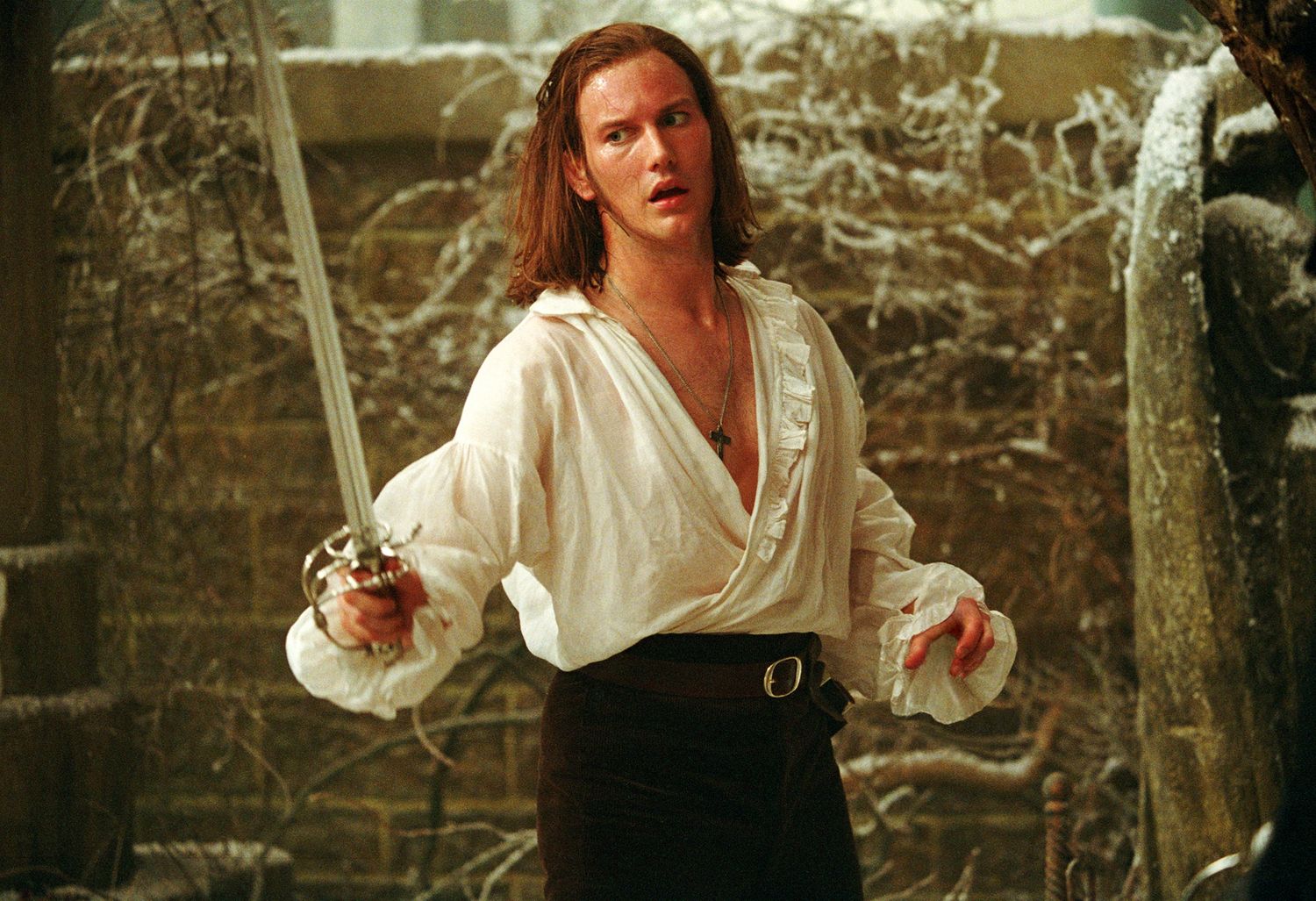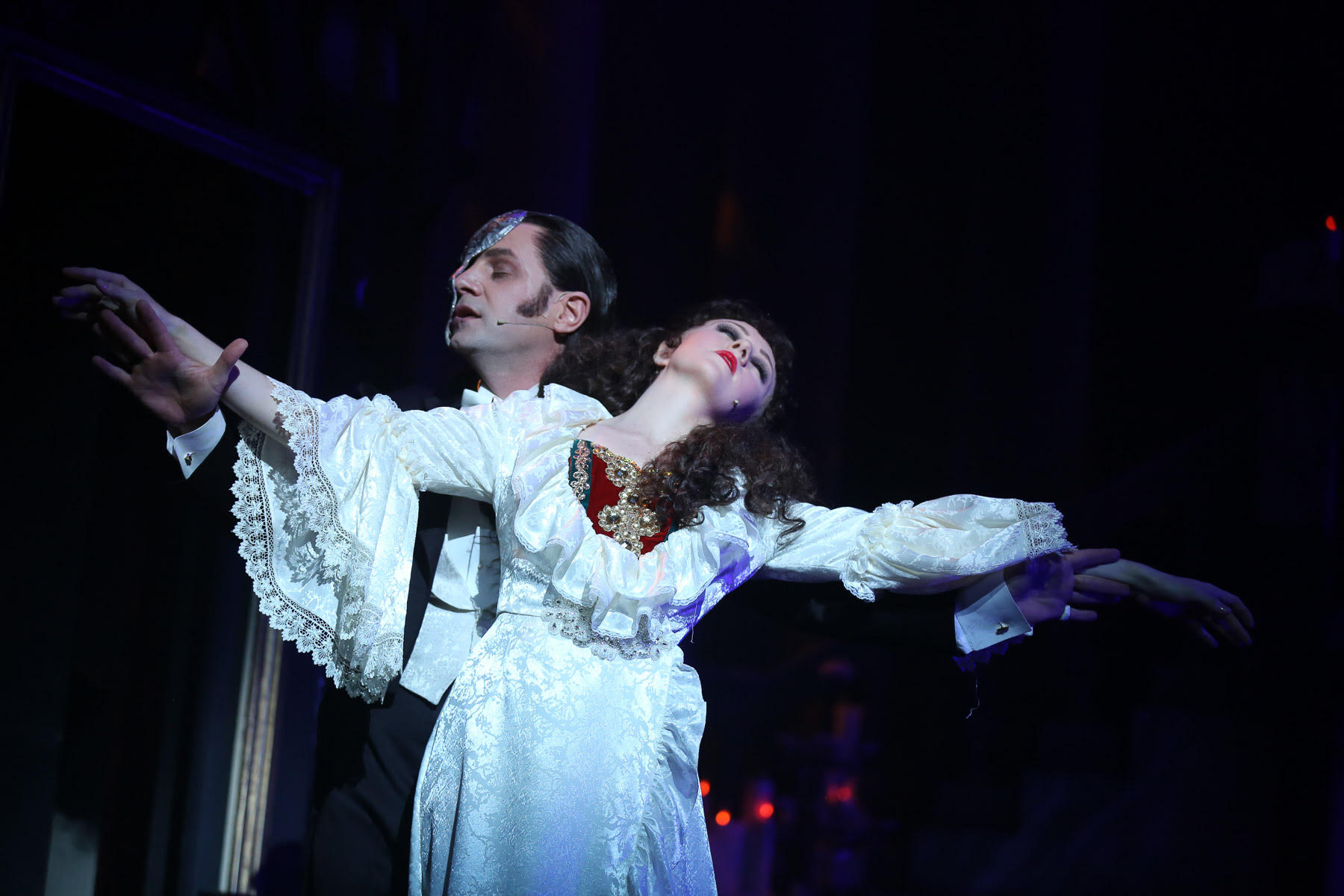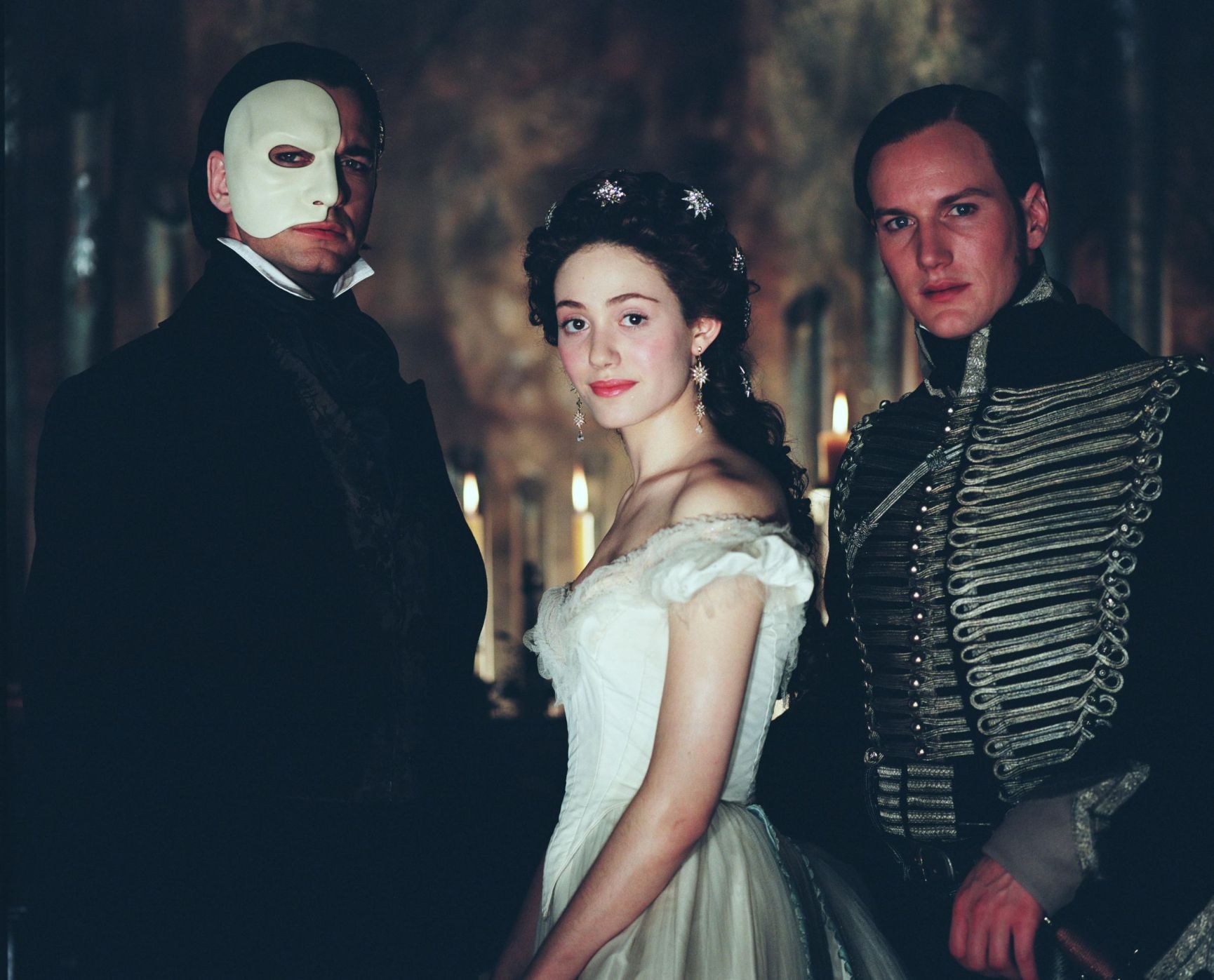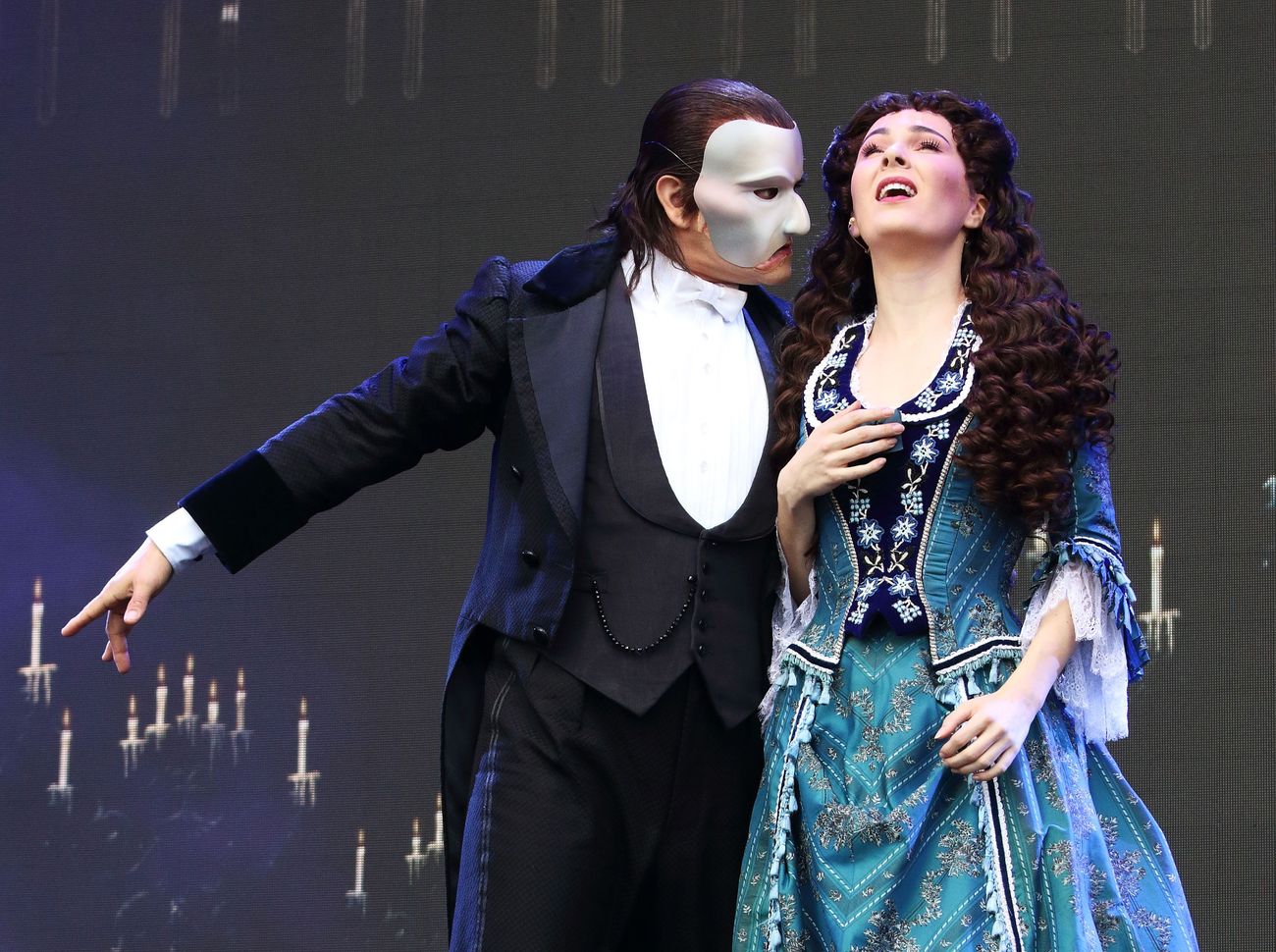Home>Events & Info>Opera>Where Is Phantom Of The Opera Set


Opera
Where Is Phantom Of The Opera Set
Modified: January 22, 2024
Discover the enchanting world of the iconic Phantom of the Opera as it takes you through the mesmerizing opulence and drama of the opera house. Experience the magic of this timeless tale set against the backdrop of the captivating opera scene.
(Many of the links in this article redirect to a specific reviewed product. Your purchase of these products through affiliate links helps to generate commission for AudioLover.com, at no extra cost. Learn more)
Table of Contents
Introduction
“Phantom of the Opera” is a timeless tale filled with passion, tragedy, and mystery. This iconic story has captivated audiences around the world for decades, with its haunting melodies and unforgettable characters. But have you ever wondered where exactly this enchanting saga is set? In this article, we will delve into the fascinating world of “Phantom of the Opera” and explore its captivating setting.
The story of the “Phantom of the Opera” originated from a French novel written by Gaston Leroux in 1910. The novel tells the tale of a disfigured musical genius known as the Phantom, who haunts the depths of an opera house in Paris. Over the years, the story has been adapted into various forms, including stage musicals, films, and television shows, each with its own unique interpretation of the setting.
The setting of “Phantom of the Opera” is intricately linked to the plot and characters. The unique atmosphere and grandeur of the setting play a significant role in bringing this captivating story to life. From lavish opera houses to underground tunnels and secret passages, let’s embark on a journey to discover the vibrant and mysterious world of the “Phantom of the Opera.
The Origins of “Phantom of the Opera”
The story of the “Phantom of the Opera” finds its roots in the imagination of French author Gaston Leroux. Originally published in 1910, Leroux’s novel introduced readers to the tragic tale of Erik, a disfigured musical genius who becomes infatuated with a young soprano named Christine. Leroux drew inspiration from his own experiences as a journalist and court reporter, as well as his fascination with the mysterious and unknown.
Leroux’s novel blends elements of romance, horror, and mystery, creating a compelling narrative that has captivated readers for over a century. Its exploration of love, loss, and obsession has resonated with audiences worldwide, cementing its status as a classic literary work.
While the novel provided the foundation for the story, it was the creative adaptation and interpretation of “Phantom of the Opera” that propelled it to even greater fame. In 1986, Andrew Lloyd Webber premiered his musical adaptation of “Phantom of the Opera” on the London West End stage. This groundbreaking production brought the tale to life, captivating audiences with its memorable music and elaborate sets.
Since its debut, “Phantom of the Opera” has become the longest-running show in Broadway history and has been staged in over 30 countries, attracting millions of theatergoers worldwide. The musical’s widespread success is a testament to the universal appeal of the story and its enduring legacy.
Over the years, the story has also been adapted into several film and television adaptations, each offering its own unique interpretation of the beloved tale. These adaptations have showcased the timeless nature of the story, proving that the allure of the “Phantom of the Opera” transcends time and medium.
With the origins of “Phantom of the Opera” firmly established, let’s now delve into the enchanting settings that have brought this captivating story to life.
Setting of the Original Novel
The original novel of “Phantom of the Opera” is predominantly set in the iconic city of Paris, France. At the heart of the story lies the magnificent Palais Garnier, which serves as the primary setting for the events that unfold. The Palais Garnier, also known as the Paris Opera House, is a grand architectural masterpiece that exudes elegance and grandeur.
In Gaston Leroux’s novel, the Palais Garnier is depicted as a labyrinthine structure, filled with opulent theaters, ornate ballrooms, and hidden passageways. With its rich history and timeless beauty, it provides the perfect backdrop for the mystique and drama of the story.
Leroux masterfully weaves the intricacies of the opera house into the narrative, showcasing the behind-the-scenes workings of the theater and the intense emotions that permeate its halls. The setting serves as a character in its own right, heightening the tension and allure of the story.
Within the Palais Garnier, the underground lake holds a significant role in the plot. This dark and mysterious body of water becomes the hidden sanctuary for the Phantom, where he lurks in the shadows, orchestrating his plans and exerting his influence over the opera house’s inhabitants.
The city of Paris, with its vibrant streets and captivating atmosphere, also comes to life in Leroux’s novel. Through vivid descriptions, readers are transported to the bustling streets and intimate cafes, where the characters’ lives intertwine and the stage is set for tragedy and romance.
The setting of the original novel plays a crucial role in establishing the eerie and haunting ambiance of the story. Leroux’s vivid descriptions and attention to detail bring the Palais Garnier and Paris to life, immersing readers in a world of beauty, mystery, and intrigue.
As we explore further, we will uncover how the setting has been further adapted and reimagined in various stage and screen adaptations of “Phantom of the Opera.”
Setting of the Musical Adaptation
The musical adaptation of “Phantom of the Opera” takes the enchanting setting of the original novel and brings it to life in a visually stunning and theatrical way. While still set in the grand Palais Garnier in Paris, the musical further enhances the ambiance with its elaborate sets and mesmerizing stage design.
One of the most iconic and captivating settings in the musical is the grand chandelier that hangs in the center of the opera house. As the show begins, the chandelier dramatically descends, setting the stage for the mesmerizing world of the Phantom. Throughout the performance, the chandelier becomes a symbol of the Phantom’s presence and power.
The stage design of the musical ingeniously transports the audience into the depths of the opera house. Lavish sets depict the opulence of the ballrooms, the grandeur of the theaters, and the haunting underground lair of the Phantom. Through the use of intricate props, lighting effects, and meticulously crafted set pieces, the musical creates a captivating and immersive experience for the audience.
In addition to the familiar Parisian setting, the musical adaptation introduces new elements and locations that expand the world of the story. From the rooftop of the opera house, where the Phantom and Christine share a tender moment, to the catacombs beneath the city, where the climax of the story unfolds, the musical offers an enhanced and dynamic portrayal of the world of the “Phantom of the Opera.”
The setting of the musical adaptation not only serves as a backdrop but also adds depth and emotion to the storytelling. It enhances the romance and tragedy, intensifying the connection between the characters and the audience.
Overall, the musical adaptation of “Phantom of the Opera” takes the original setting and elevates it to new heights. Through its visually stunning sets and imaginative stage design, it creates a world that immerses audiences in the magic and allure of this timeless story.
The Palais Garnier: A Majestic Backdrop
The Palais Garnier, also known as the Paris Opera House, serves as the majestic backdrop for the story of “Phantom of the Opera.” This architectural masterpiece stands as a symbol of elegance and opulence, capturing the essence of 19th-century Paris.
Designed by Charles Garnier and completed in 1875, the Palais Garnier is an extraordinary feat of architecture, boasting a neoclassical facade with ornate sculptures and intricate detailing. Its grand entrance, with its imposing columns and sculptural reliefs, sets the tone for the grandeur and magnificence that awaits inside.
Upon entering the Palais Garnier, visitors are greeted by the breathtaking sight of the grand staircase. This iconic feature, adorned with velvet carpets, gleaming statuary, and ornamental balustrades, serves as a visual feast for the eyes and a testament to the luxuriousness of the era.
Beyond the grand staircase, the Palais Garnier reveals a world of stunning theaters and lavish ballrooms. The auditorium, with its opulent red and gold decor, features a ceiling painting by Marc Chagall that depicts scenes from famous operas. The theater’s plush seating and exquisite chandeliers create an air of sophistication and grandeur, immersing patrons in a truly extraordinary theatrical experience.
The ballrooms of the Palais Garnier, such as the Grand Foyer, are equally noteworthy. These grandiose spaces, adorned with sumptuous decorations and intricate tapestries, transport visitors to a bygone era of elegance and refinement. The grandeur of the ballrooms serves as a stark contrast to the hidden darkness that lurks beneath the opera house’s surface.
As the setting of “Phantom of the Opera,” the Palais Garnier provides a rich and captivating environment that heightens the drama and mystery of the story. The intricate architecture and sumptuous interiors of the Palais Garnier reflect the luxurious lifestyle of the characters and create a sense of enchantment.
One of the most iconic scenes in the musical is the Phantom’s grand entrance during the masquerade ball in the Palais Garnier. As the Phantom descends the grand staircase in his red velvet cloak and mask, the atmosphere crackles with anticipation and intrigue.
The Palais Garnier serves as a character in its own right, embodying both beauty and darkness. It captures the imagination of audiences, immersing them in the elegance and magic of the world of “Phantom of the Opera.”
Next, let’s explore the enchanting city of Paris, which serves as the backdrop for this captivating tale.
Paris: The City of Love and Mystery
Paris, often referred to as the City of Love, serves as the evocative backdrop for the captivating story of “Phantom of the Opera.” This enchanting city, known for its romantic charm and rich history, adds an extra layer of allure and mystery to the narrative.
The streets of Paris come alive in the story, becoming a hub of enthralling activity and vibrant atmosphere. From the bustling cafes and shops to the charming bridges and cobblestone alleyways, every corner of the city seems to hold a secret and a promise of adventure.
Paris is renowned for its iconic landmarks, and “Phantom of the Opera” showcases some of the city’s most famous sites. The Eiffel Tower, with its towering presence and stunning views, provides a breathtaking backdrop for pivotal moments in the story. The majestic River Seine, which winds its way through the city, adds a touch of serenity and symbolism to the narrative.
But it is the romantic allure and sense of heightened emotion that Paris embodies that truly sets the stage for the story. The city’s reputation as a haven for artists, musicians, and poets lends an air of creativity and passion that resonates with the themes explored in “Phantom of the Opera.”
The magical and poetic essence of Paris is epitomized in the scenes where the characters explore the city’s streets, sharing intimate moments and revealing their innermost desires. From moonlit walks along the Seine to stolen glances beneath the city’s lamplights, Paris becomes more than just a setting; it becomes a character that influences and shapes the story.
Additionally, the juxtaposition of the city’s vibrant exterior with the darkness that lies beneath mirrors the dichotomy found within the characters themselves. Paris, with its romantic facade, serves as a stark contrast to the hidden secrets and turbulent emotions woven within the tale.
As the City of Love and Mystery, Paris adds depth, allure, and a sense of adventure to the story of “Phantom of the Opera.” Its iconic landmarks, romantic atmosphere, and rich history come together to create an unforgettable setting that mirrors the passion and intensity of the characters’ journeys.
Next, let’s delve into the hidden underground tunnels and secret passages that add an element of intrigue to the story.
Underground Tunnels and Secret Passages
One of the most intriguing aspects of “Phantom of the Opera” is the presence of underground tunnels and secret passages beneath the grand Palais Garnier. These hidden pathways play a pivotal role in the story, adding an element of mystery and suspense.
The underground tunnels, also known as the catacombs, are a labyrinthine network of passages beneath the opera house. These passages were originally used for maintenance purposes but have since become a realm of darkness and secrecy.
In Gaston Leroux’s novel, the catacombs serve as the haunting abode of the Phantom. It is within these dimly lit tunnels that the Phantom finds solace and privacy away from prying eyes. The catacombs become an extension of the Phantom’s character, reflecting his hidden nature and his deep connection to the opera house.
The secret passages in “Phantom of the Opera” add an element of intrigue and allow the characters to move undetected throughout the opera house. These hidden corridors connect various parts of the Palais Garnier, enabling the characters to navigate the grand building without being seen.
The secret passages also serve as a means for the characters to communicate and make their entrances and exits in a mysterious and dramatic fashion. The passages allow for unexpected encounters, clandestine meetings, and moments of heightened tension.
In the musical adaptation, the secret passages and underground tunnels are brought to life through stunning stage design and lighting effects. As characters traverse the hidden pathways, the audience is transported into the depths of the opera house, further immersing them in the secretive and enigmatic world of the story.
These underground tunnels and secret passages add a sense of intrigue and danger to the narrative. They represent the hidden depths of the human psyche, the secrets that lurk beneath the surface. They serve as a physical manifestation of the characters’ internal struggles and desires.
The presence of the underground tunnels and secret passages in “Phantom of the Opera” creates a thrilling and mysterious atmosphere. It showcases the allure of the unknown and adds an additional layer of complexity to the story, making it a truly captivating and unforgettable tale.
Next, we will explore the Phantom’s hidden lair, a sanctuary of darkness and creativity.
The Phantom’s Lair: A Hidden Sanctuary
Deep within the labyrinthine catacombs of the Palais Garnier lies the Phantom’s secret lair—a hidden sanctuary that serves as both his dwelling and artistic refuge. This secluded and mysterious hideaway plays a significant role in the story of “Phantom of the Opera,” offering insight into the character and his complex nature.
The Phantom’s lair is a place shrouded in darkness and secrecy, reflecting the enigmatic persona of its inhabitant. Accessible only through hidden passages, it becomes a sanctuary where the Phantom can unleash his creativity and immerse himself in his love for music and theater.
The lair itself is a fascinating blend of haunting beauty and eerie charm. Lit by candlelight and adorned with ornate furnishings, it exudes an otherworldly atmosphere. Decorated with mirrors, musical instruments, and dramatic props, the lair becomes a canvas for the Phantom’s artistic expressions and a reflection of his tortured soul.
Within the confines of his lair, the Phantom surrounds himself with his prized possessions—a vast collection of music, costumes, and mechanical contraptions, all carefully arranged to mirror his artistic obsessions and ambitions. This hidden world serves as a visual representation of the Phantom’s complexity and the depth of his passion.
It is within the intimacy of his lair that the Phantom reveals his vulnerable side. It is here that he shares his profound love for Christine, serenading her with haunting melodies and drawing her deeper into his world. The lair becomes a place of forbidden romance and forbidden desires.
However, the Phantom’s lair also holds darkness and danger. It is from this hidden sanctuary that the Phantom orchestrates his acts of manipulation and intimidation, wielding his power over the opera house and its inhabitants. The juxtaposition of beauty and darkness in the lair mirrors the duality of the Phantom’s character.
Throughout the story, the lair serves as a symbol of the Phantom’s isolation and longing for acceptance. It represents a realm where he can exist on his own terms, crafting a world that reflects his vision of beauty and art. This hidden sanctuary becomes a physical manifestation of the Phantom’s desire for connection and understanding, as well as his anguish and longing for redemption.
As the “Phantom of the Opera” unfolds, the exploration of the Phantom’s lair reveals not only the depths of his complexities but also the capacity for transformation and redemption. It is within this hidden sanctuary that the ultimate resolution of the story takes place.
Now that we have uncovered the secrets of the Phantom’s lair, let’s conclude our journey through the captivating setting of “Phantom of the Opera.”
Conclusion
The setting of “Phantom of the Opera” is a captivating and integral part of the story, immersing audiences in a world of romance, mystery, and tragedy. From the grand Palais Garnier to the vibrant streets of Paris, and from the underground tunnels to the Phantom’s hidden sanctuary, each location adds depth and atmosphere to the tale.
The Palais Garnier, with its opulent interiors and breathtaking architecture, serves as a majestic backdrop that reflects the grandeur and elegance of 19th-century Paris. It becomes a character itself, heightening the drama and allure as it showcases the world of opera and the hidden mysteries within its walls.
Paris, the City of Love and Mystery, adds an extra layer of enchantment to the story. Its romantic atmosphere and iconic landmarks create a sense of timeless allure, setting the stage for the passionate encounters and emotional journeys of the characters.
The underground tunnels and secret passages beneath the opera house bring an element of intrigue and suspense, representing the hidden depths and secrets within the story. These hidden pathways serve as conduits for the characters’ movements and interactions, adding to the sense of mystery and danger that permeates the narrative.
And at the heart of it all lies the Phantom’s lair, a hidden sanctuary that reflects the complexity and artistic passion of its inhabitant. This secluded retreat becomes a symbol of longing and obsession, serving as the backdrop for forbidden romance, manipulation, and ultimately redemption.
“Phantom of the Opera” is a timeless tale that showcases the power of setting in storytelling. The rich and evocative locations immerse audiences in a world of beauty, mystery, and emotion. The grandeur of the Palais Garnier, the charm of Paris, the secrets of the underground, and the enigmatic Phantom’s lair all contribute to the timeless allure of this captivating story.
Whether experienced through the pages of a novel, the melodies of a musical, or the scenes of a film, the setting of “Phantom of the Opera” transports audiences to a world of passion and intrigue, leaving an indelible mark on their hearts and imagination.

